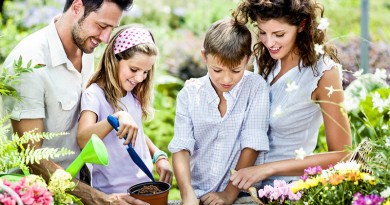Seaside Gardening – Planting in Sand Dunes, Salt Tolerant Plants and More
Seaside gardening comes accompanied by three main challenges like wind, sand and salt. Whilst overcoming these challenges becomes easier by choosing hardy plants, your gardening will also benefit the society by helping to preserve the dunes and providing a defense against storms.
In this article, we list some tips for gardening in coastal areas and a list of plants that survive in these soil and weather conditions.
Planting in the Sand
Planting in the sand helps preserve the sand dunes which are very important for with-holding devastating storms. Use native foliage to plant in sandy areas as these will hold the soil with their roots and help prevent soil erosion.
Protect Plants from Salt
No chemical or fertilizers can neutralize the effects of a salt spray. Be on your guard and keep rinsing off the salt off your plants. To rinse salt off the ground after saltwater intrusion, leave the sprinklers or soaker hoses on for hours to leach the salt through the soil. You will be able to make out the plants which have lived and which have died in a week’s time.
Raised Bed & Container Gardening
If you wish to have lots of annuals, perennials, herbs and vegetables in your seaside garden, there are two easy ways to achieve this. Make the soil more fertile by keeping it free from salt spray and by addition of organic manure. This is easily possible with raised garden beds and by maintaining container gardens. Container gardens can also be kept in shade to avoid sun and thus open up more plant possibilities.
Plants suitable for Your Seaside Garden
Plants have to be chosen carefully for your seaside garden. Plants need to hardy enough to bear strong winds and should also be able to withstand sun, salt and hard sand. Very delicate plants are not suitable as they are likely to be uprooted by strong wind currents.
Here are ten of our favorite plants which will add color and texture to your seaside garden:
1. Goldenrod – provides a lovely yellow color in the fall.
2. Evergreens – like juniper, cedar and barberry are sturdy enough to survive coastal climate.
3. Wild Bayberry – requires almost no maintenance and also attract birds.
4. Sweet Pea – grows directly in the sand and reaches to a height of up to six feet.
5. Beach Plums – grow in shade and are difficult to transplant so choose the planting spot carefully.
6. Cosmos – grow very well even though they look delicate and provide a burst of color.
7. Rugosa Roses – grow very well in the sand dunes.
8. Yucca – also grows directly in the sand.
9. Hostas – grow profusely like they do everywhere else.
10. Seaside Vines – like trumpet vine, honeysuckle and bittersweet grow naturally in sand.


